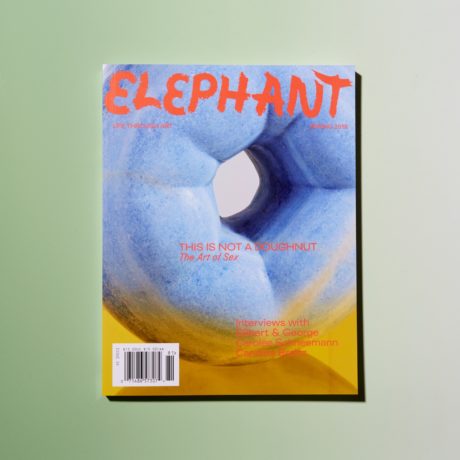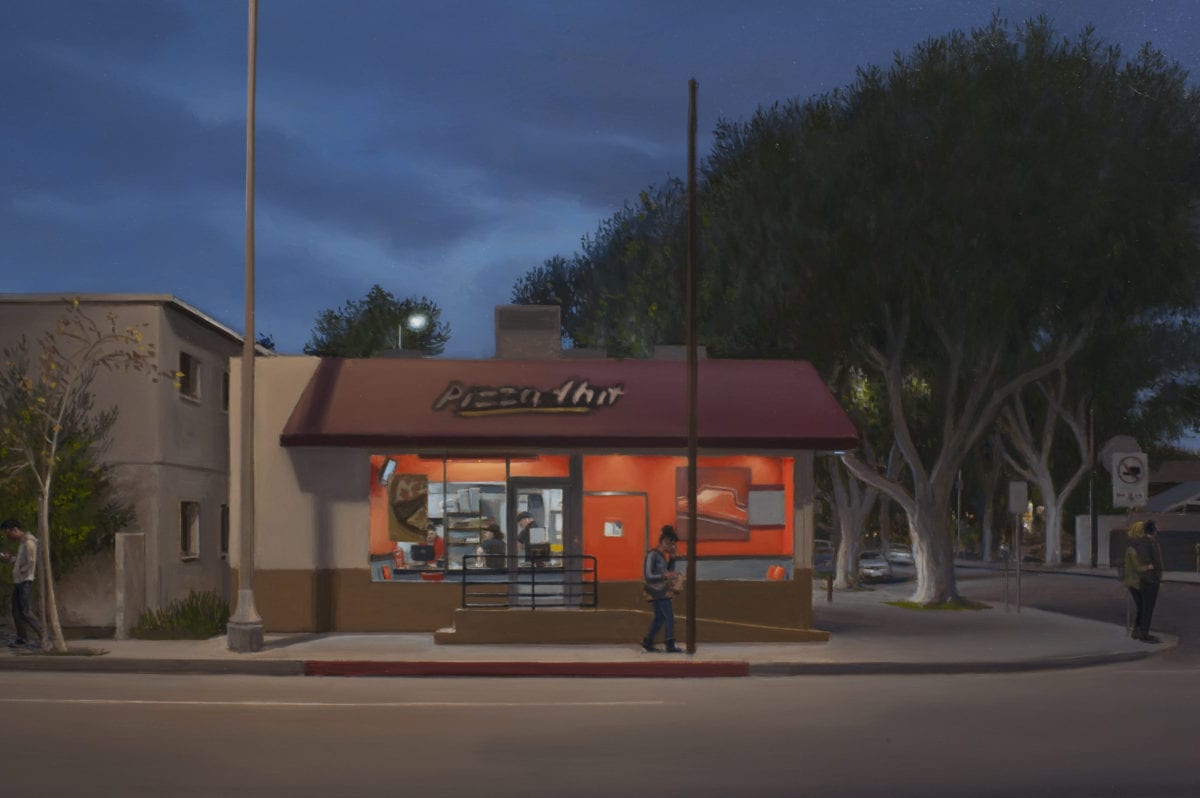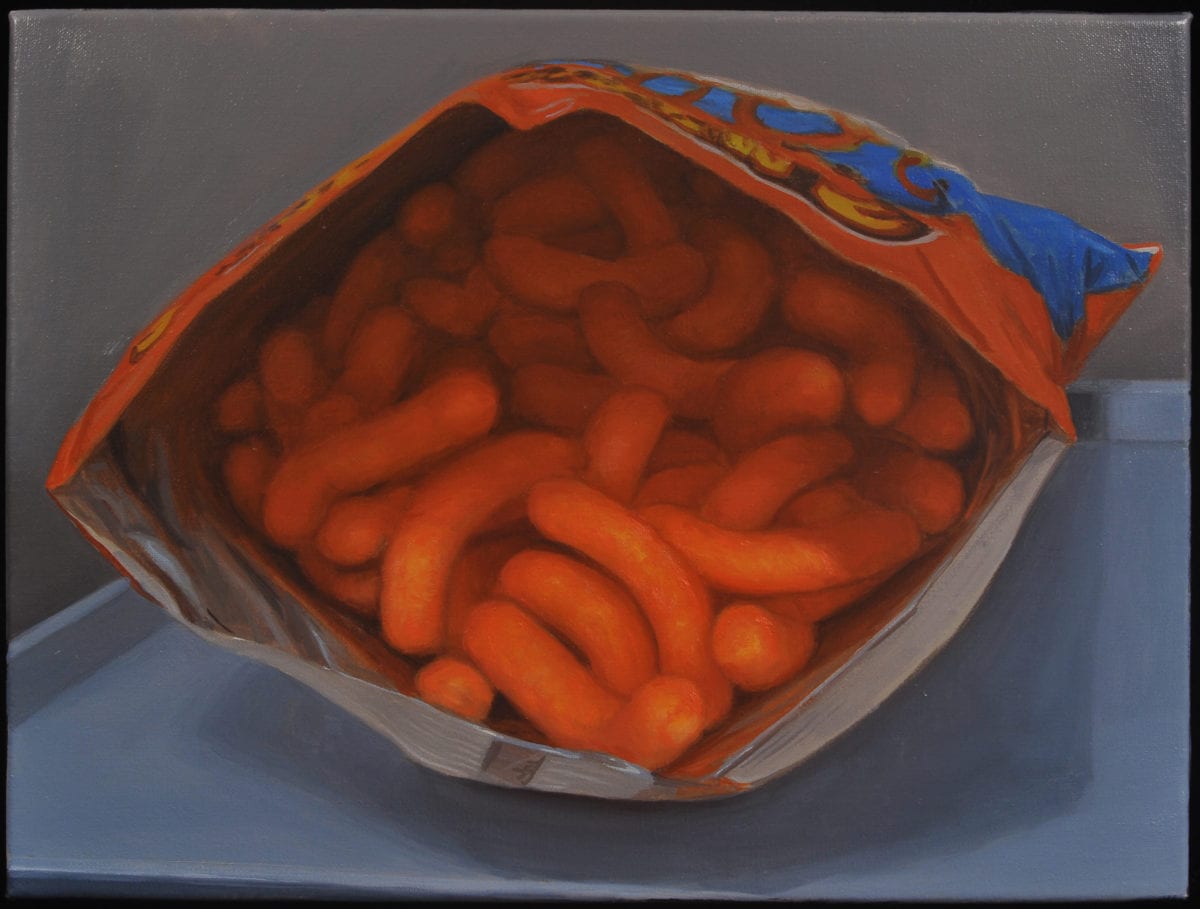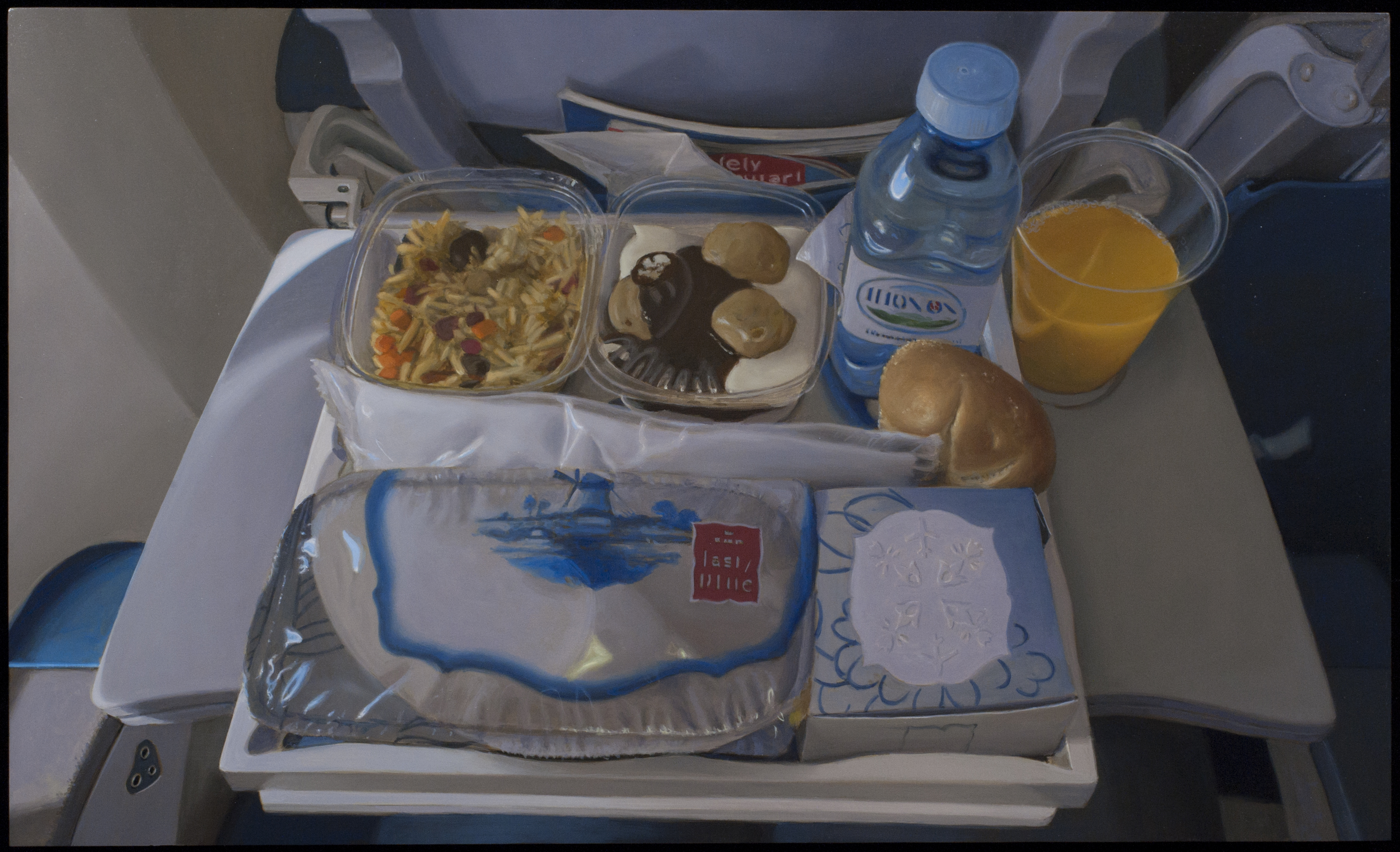
Marc Trujillo paints contemporary America. He looks for the typical, the kind of places where you don’t really know what state or city you are in, which could be in any one of countless locations over the country. There are giant retail stores such as Target or Casco—with their shopping lanes stacked full of colourful products in large quantities—streamlined gas stations and fast-food outlets; consumer places, made for passing through. They are fascinating and uncanny, embodying the persistent pursuit of comfort and happiness—a world where everything is for sale. In these consumer landscapes people seem self–absorbed and not very communicative, this world looks quite empty, amidst this abundance, if you see it on an immaterial level. Is this life?
Trujillo is a figurative painter who forms his scenes precisely, based on close and repeated observation. Whether we should call him a realist is a matter of definition. The paintings are quite factual; even though there are aspects of his work that seem unreal or overstated. The difficulty in definition is where his work starts to become interesting: it is ambiguous, both seductive and repulsive, hard to describe, even though everything is there, painted in detail.
“Los Angeles is the only city in the US where people are not focussed on what is happening in New York,” Trujillo says, with some relief, while I meet him in his studio in the San Fernando Valley. For him, LA is a good place to work. He came to the city in 1998 after living in New Jersey, New York and in Connecticut where he studied at Yale, with William Bailey among others. His studio is in a small cottage, situated in the garden behind his house. There he paints, despite (or because of) the Californian sun, with artificial light (it needs to be constant) and an air conditioner blowing. He talks passionately about painting, with pauses of ironic self-reflection.
- Left: 8810 Tampa Avenue, 2015. Oil on aluminium; Right: 8947 West Pico Boulevard detail. Courtesy of the artist
On his easel is a painting showing a fast–food restaurant in the early evening; the sky is getting darker, but is still intense blue. Inside it seems cozy, time to get some food, outside some people walk around, looking at their cell phones, having a drink. From the logo on the storefront we can figure out it is a fast-food place, in this case, Pizza Hut. Usually the logo is modified in the paintings and not so easy readable. Would it be too specific, or documentary, I ask Trujillo, to identify the places with their real names? “It is more about the difference between seeing and reading,” he says. “Looking is more open–ended and interesting to me than reading. People always want to substitute a label for a thing, rather than actually looking. They want to read their way through the world. If I put text in the painting, it snaps you back to the factual surface. It can undo the spell of looking at the light and space, which is what the painting is about.”
Trujillo develops his studio paintings over months, working on light and space; they contain collected moments of observation. In order to make the painting work, he returns over and over to his subject matter or model, to observe, make colour charts and drawings. “Through drawings I internalize how the whole thing works. It clarifies my visual motive for making the painting and helps me to more fully imaginatively own what I’m painting. I make them like one frame movies: I have to build the set, light it and cast it. I am trying to keep you in the paintings as a viewer for as long as possible.”

The pizza chain is a place that he passes daily; he has seen it a thousand times. Yet his goal is not to capture that specific spot in town. Rather he looks for an enduring quality and also the emptiness of the scene, which makes the painting into an image of taste, a culture and its habits, also its solitude. You can feel the chill of the void, as Trujillo calls it, an aspect he also likes to look for in the work of other painters.
“I want it to appear natural and direct, and less like photography,” he says. “Photography is a great tool, but it does things to light. The camera has a fixed iris, which flattens the darks and the lights. Photography can only be accurate about one temperature of light at a time. Either I am going to get the ambient daylight right, the natural light or the artificial light, but not everything at the same time. For instance, sodium vapour streetlight tends to get way too orange in photos.”
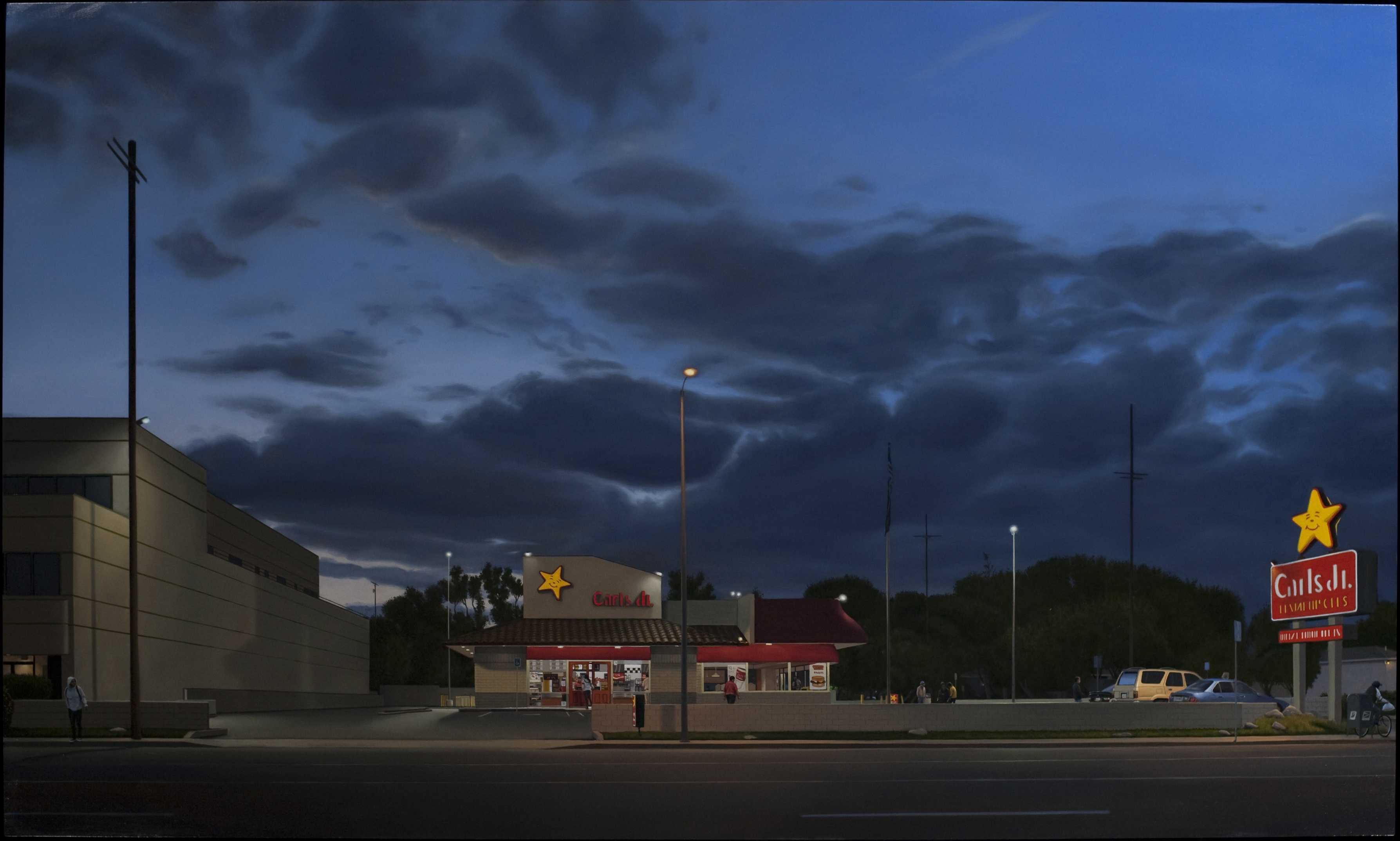
Is light the essence of Trujillo’s “realism”? “I want the light to be natural and balanced. Think of the old Dutch painters. Vermeer had a real natural balance of light. There is a painting by him at the Metropolitan Museum in New York, A Maid Asleep (1656–57), showing a woman sitting at the table. There is such a specificity and clarity of light in the painting, which is one of the things that makes me excited. Light is a really good subject matter for painting. All parts in the work have to agree to convey a sense of light, so the pieces together add up to more than the sum of their parts. Everything has to cooperate. It’s like in a crime where the alibis have to match up, or you don’t get away with it.
“The Dutch and Flemish painters started with what they called a dead colour layer. Mostly umbers and white, going through the entire painting with this very limited palette and then they laid in the colour. I like to do that too, and it means something to me to bring this long, old, slow, careful way of looking and making to bear on this world we’ve made for ourselves which is mostly not meant to be looked at for more than a moment, or even at all.”
“I am American. I have mixed feelings about all this stuff. I am ashamed of Pizza Hut; I feel bad about it and meanwhile… I’m starting to get a little hungry”
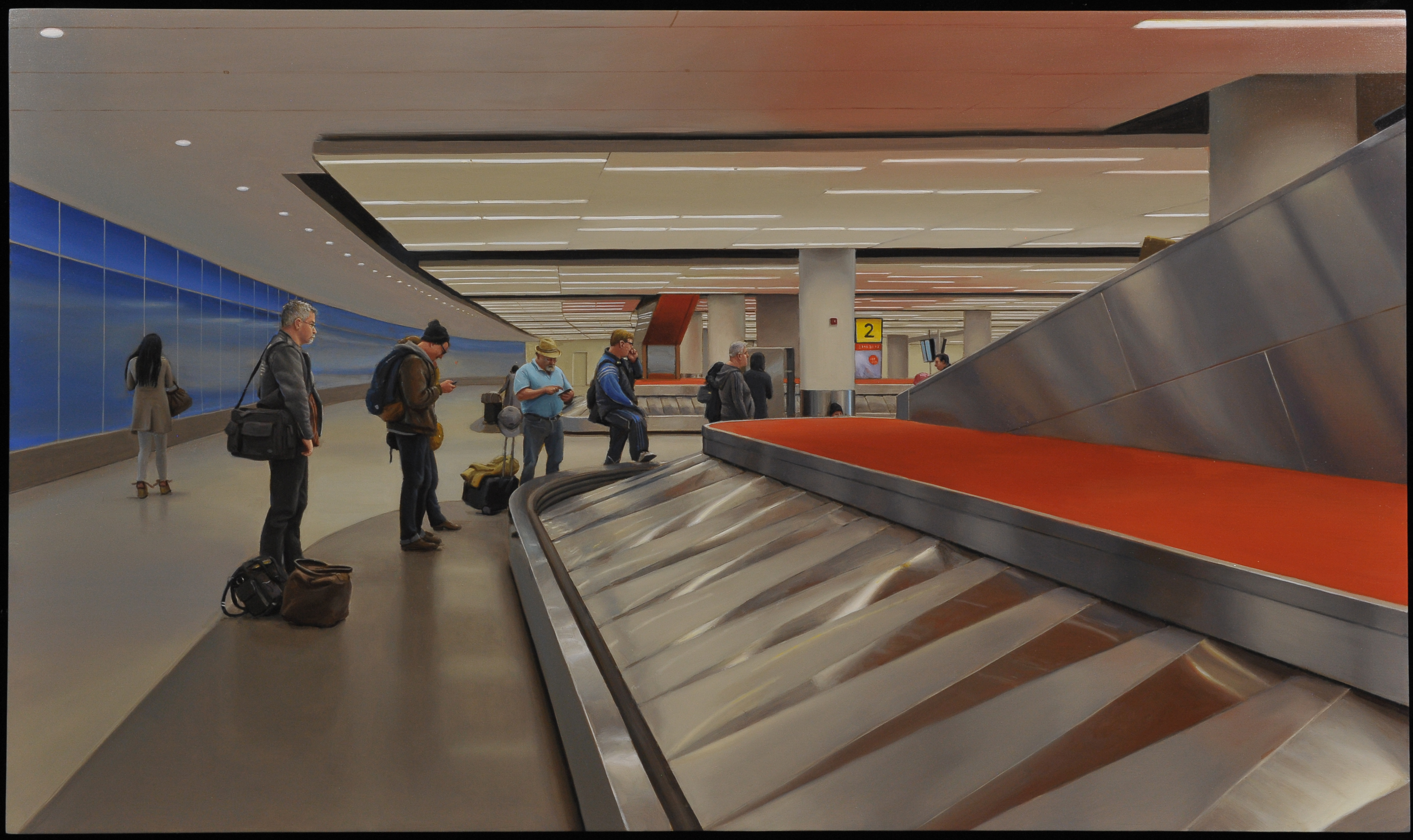
Trujillo aims for the natural but his paintings also have artifice, and that even appears to be their quality. They have an ambiguous atmosphere, which makes them something you want to look at for a longer time.
“Sure, they are artificial. To make something look kind of natural you end up doing weird things. Ultimately the painting is its own place, not primarily a representation of an existing place. Even though I title paintings with the street address, where I found the motif, to give it some specificity. But it is not about how this supermarket looks on 14 September at this or that hour. I also do not emotionally colour the scenes that I paint. It has to be detached. Most figures that you see in the painting were never there. I took them from elsewhere. I actually could have you walk around there as well, you are quite tall. I should take your picture.”
It is interesting to see that Trujillo wants, in many aspects, for the painting to be true. He wants the perceptional facts to be right. But while being so precise in representation, his paintings are about something that is not really tangible. They create an in-between-zone, with comfort on one side and a feeling of estrangement as its opposite. His appreciation of Rembrandt and Vermeer should be understood in the context of wanting to express a view of contemporary society, not as a separate world to escape into. “Some figurative painters nowadays act almost as if they wish it was still 1850. Lots of beautiful ‘woman on the sofa’ paintings. For me it is important to be involved in the world around me, as it is now.”
- Studio photography by Max Knight
Is it possible to make a convincing painting of a woman on a sofa nowadays? “I want to avoid people’s fantasy life. As James Joyce pointed out, pornography is when you show the viewer something he wants to possess. This doesn’t need to refer to something sexual. It can be a beach, a palm tree, a Porsche. That shuts me off when I’m looking at other people’s work, so you won’t find those things in my paintings. Even though I am a Los Angeles–based painter, and we have palm trees all over the state, I don’t paint them. It would make too specific a place and imply longing or vacation. For Kant the greatest moment you can have in front of a work of art, what he called the God-like moment, is to experience disinterested pleasure. You like what you are seeing, but not because you want to possess it. This sounds about right to me, so, for instance, when I look at Rembrandt’s painting of a woman bathing in a stream, I do not want what I am being shown. It is the painting itself that excites me.”
Nonetheless, he does play with desire; he previously painted a bag of chips, open, ready to take some, which is something people actually want—to relax, have a beer and some chips. “I am American. I have mixed feelings about all this stuff. I am ashamed of Pizza Hut; I feel bad about it and meanwhile… I’m starting to get a little hungry. If you would have shown up with some slices, I would have probably liked that. Not just because of the flavour. It is comfort food, it makes you feel happy.”
- Left: Cheetos, 2014. Oil on linen; Right: Fritos, 2016. Oil on panel
“Sure, they are artificial. To make something look kind of natural you end up doing wierd things”
Trujillo also made a painting of an inflight meal, shown from the short, aerial view that passengers have from above, capturing the bland and confined experience of a meal in the air. It appears real and available, but there is also friction felt in looking with such high aesthetic attention at a meal that we all know can be pretty bad.
How does the painter reflect on creating the necessary distance in a painting, to attain a certain ambiguity? Does there need to be some kind of irony to make it functional and credible?
“Not exactly irony. To quote WH Auden’s definition of poetry, I am looking for the ‘precise expression of mixed feelings’. For me a lot of stuff is like that, like going to a Costco store or having airplane food. I like air travel. I know it’s bad—and I am into it at the same time.”
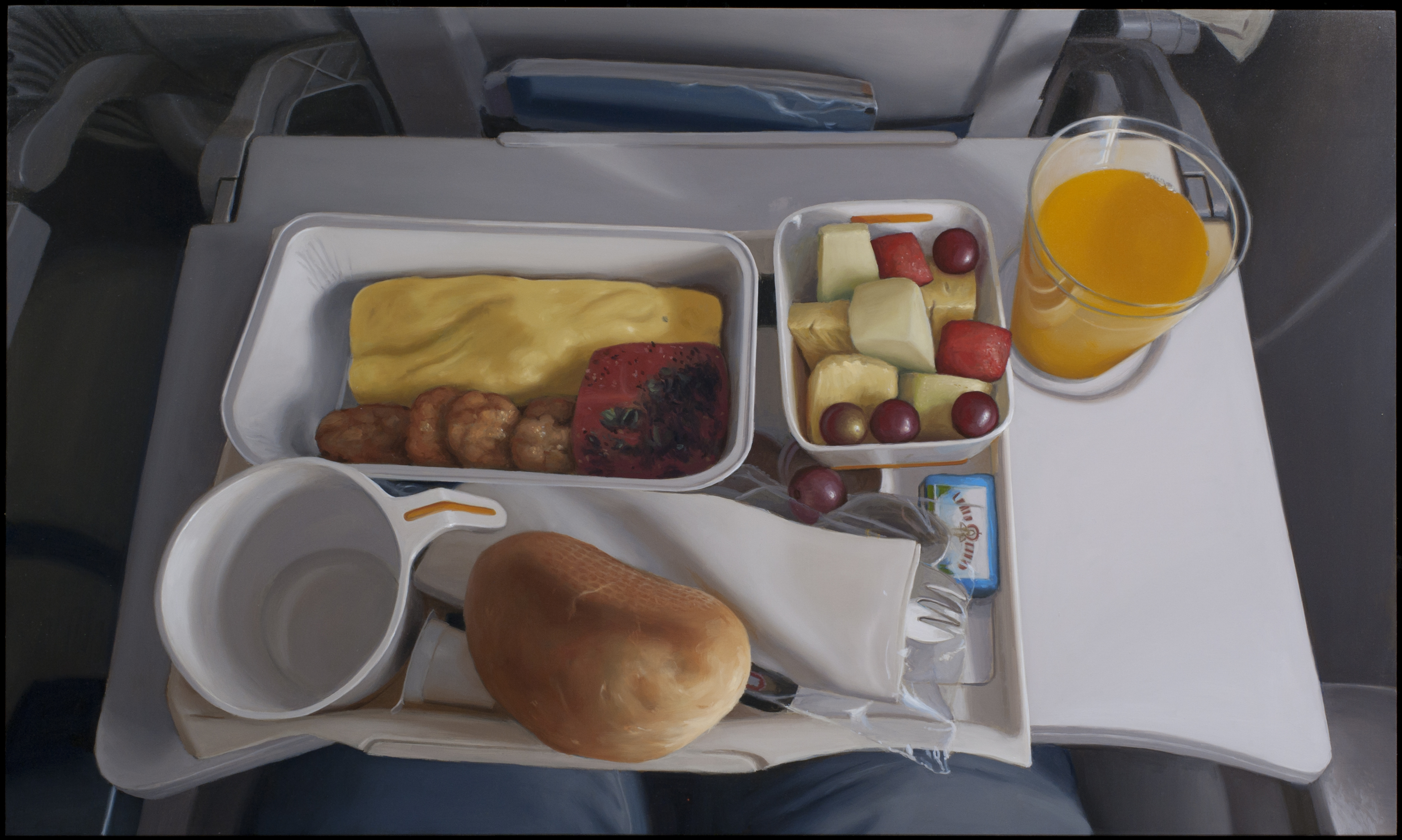
Is Trujillo looking for some kind of statement about the places and products that he paints? It offers a pretty straightforward image of current capitalism. “It can’t be avoided, but not a one-sided statement. The moment I feel I’m being preached to by a work of art, all possibility for interaction is over.” In his fascination with American consumer society, does he feel connected to pop art? The ambiguous appreciation seems akin, which would make him a post-pop artist.

“Yes, pop art plus some kind of straight realism, like the work of the English painter Rackstraw Downes. He’s a fellow painter of American in-between places who has been an inspiration to me, although there are some important differences. He’s a democratic painter, the rigour and his choice of place he brings to his paintings both resonate with me. His work is phenomenological; really about seeing itself, you can see this, for example, with how much he addresses what it means to turn your head in empirical space. As a result the spaces in his paintings kind of twist around. I’m more pulled back from the subject and it’s more staged.”
And the pop art?
“I remember as a kid seeing a work by Claes Oldenburg in the Los Angeles County Museum of Art. There was this giant ice bag. My dad let me crawl around on it and then the museum guard hurried over to prevent that. It’s the first museum experience I remember. Pop at the outset. People often connect my work with Edward Hopper but I would say Claes Oldenburg is a more of an influence. And Vermeer, as Hopper comes from Vermeer. I like to look at the genealogy of influence in painting, if there is a painter that I am interested in, I want to know what he was looking at.”
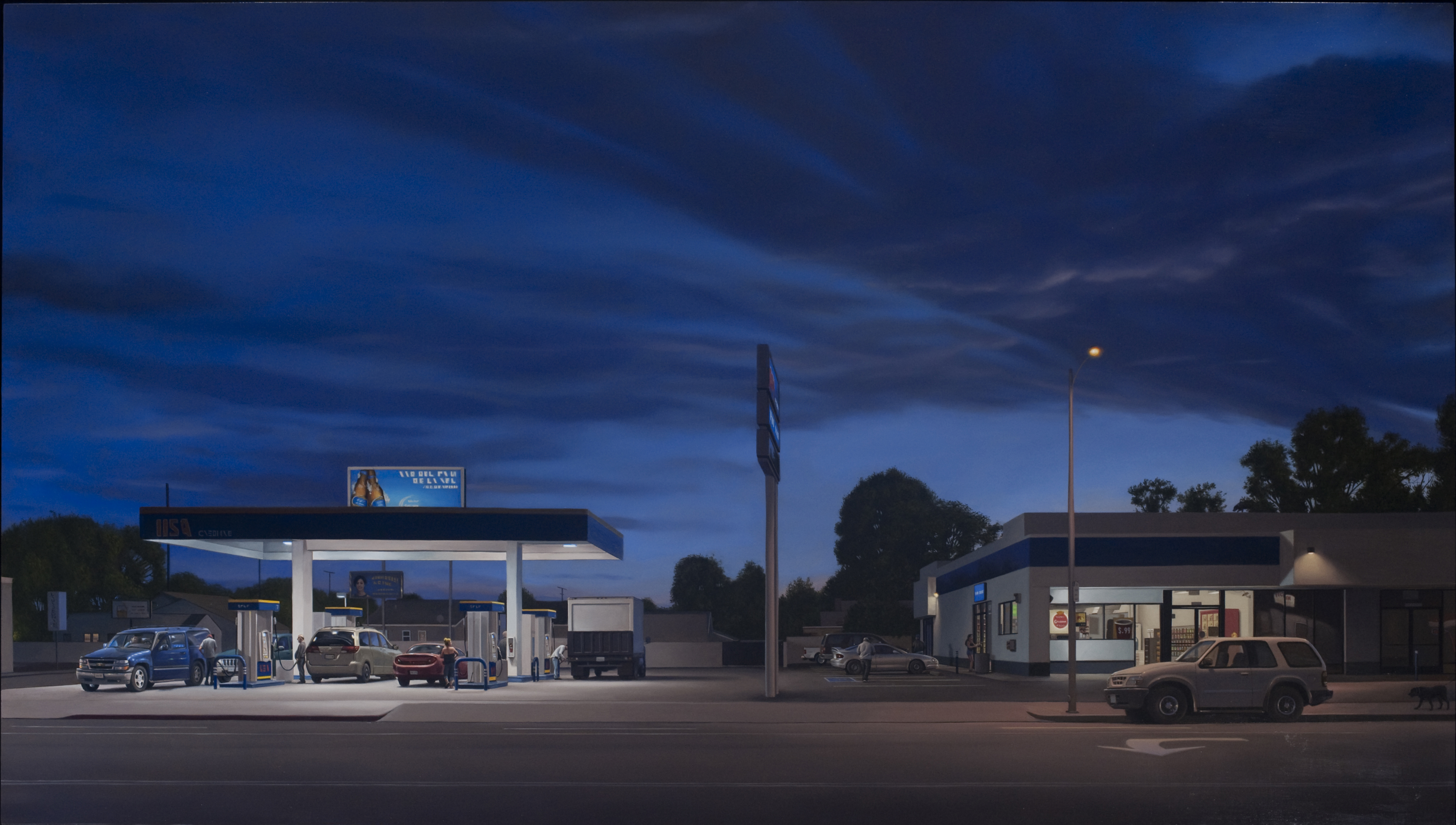
This feature originally appeared in issue 34
BUY ISSUE 34